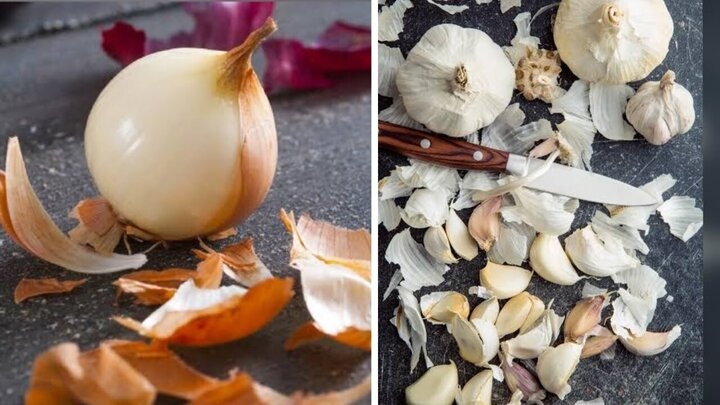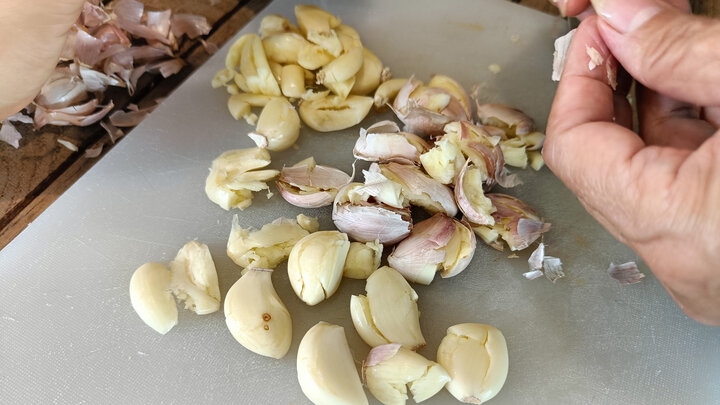Onions and garlic are two spices that Vietnamese people use almost daily in cooking, helping to remove the fishy odor and bringing an attractive flavor to the dishes, while also offering numerous health benefits. Onions are a rich source of vitamins C, B6, potassium, and folate, while garlic is packed with vitamins C, B6, thiamin, potassium, calcium, phosphorus, copper, and manganese.
**Why You Shouldn’t Throw Away Onion and Garlic Skins**
Not only the flesh but even the skins of onions and garlic can be effectively utilized in ways that not everyone knows. According to Times Entertainment, the reason to avoid discarding onion and garlic skins is that both contain beneficial nutrients such as minerals and vitamins A, C, and E, as well as antioxidants. Onion skins are a source of a flavonoid called Quercetin, a powerful antioxidant with anti-inflammatory properties, which can improve cardiovascular health.
Garlic skins, on the other hand, contain the antioxidant Phenylpropanoid, which helps protect the heart by reducing bad cholesterol levels, boosting immunity, and slowing down aging.

*Why shouldn’t you throw away onion and garlic skins? In fact, onion and garlic skins can be effectively utilized in many ways. (Source: Times of India)*
Both onion and garlic skins contain essential oils, which can be used in numerous ways to elevate your cooking to a whole new level. This is another reason why you shouldn’t discard onion and garlic skins.
Drying and grinding onion and garlic skins, then mixing them with other spices like salt, pepper, and chili, creates a unique flavor for dishes like salads, stews, soups, and curries. This is a secret trick used by many chefs in famous restaurants worldwide.
Some renowned chefs roast onion and garlic skins until they turn into charcoal and store them in jars for later use. Their secret is to add this mixture to their dishes to impart a perfect smoky flavor.
Additionally, if you want to thicken your curry, soup, or stew, simply add some onion skins to the pot. Once the soup or curry reaches the desired consistency, use a spoon to remove the skins and enjoy your delicious meal.
For Indians, adding onion and garlic skins while cooking rice is a secret to enhancing its nutritional value and imparting a unique flavor that they relish.
**Ways to Utilize Garlic Skins in Daily Life**

*Garlic skins have numerous wonderful uses that you can take advantage of. (Source: Mashed)*
Now that you know why you shouldn’t throw away garlic skins, here are some ways to put them to good use:
**Deodorizing Shoes**
You can utilize the antibacterial and antimicrobial properties of allicin in garlic skins to eliminate shoe odor. Simply place a handful of garlic skins in each shoe and let them sit overnight. The moisture inside the shoes will disappear, leaving them dry, and the unpleasant odor will be gone as well.
**Foot Soak**
The practice of soaking feet offers multiple benefits, from reducing fatigue to preventing col. You can enhance this experience by adding some garlic skins to the footbath, preferably with water at 60°C. This temperature helps release allicin completely, boosting its antibacterial and anti-inflammatory effects, eliminating foot odor, and leaving your feet feeling clean and refreshed.
**Feeding Poultry**
When feeding poultry, you can mix a small amount of garlic skins into their feed or grain. Rich in allicin, garlic skins not only increase the appetite of poultry but also reduce the incidence of diseases, improve their survival rate, and make their meat more flavorful.
**Fertilizer**
Garlic skins are an excellent source of potassium and phosphorus, making them ideal for use as a fertilizer for flowers and plants. These elements are essential for the growth of flowers and plants. Simply add garlic skins directly to the soil to provide extra nutrients, promote healthier growth, and save money on fertilizer.


































